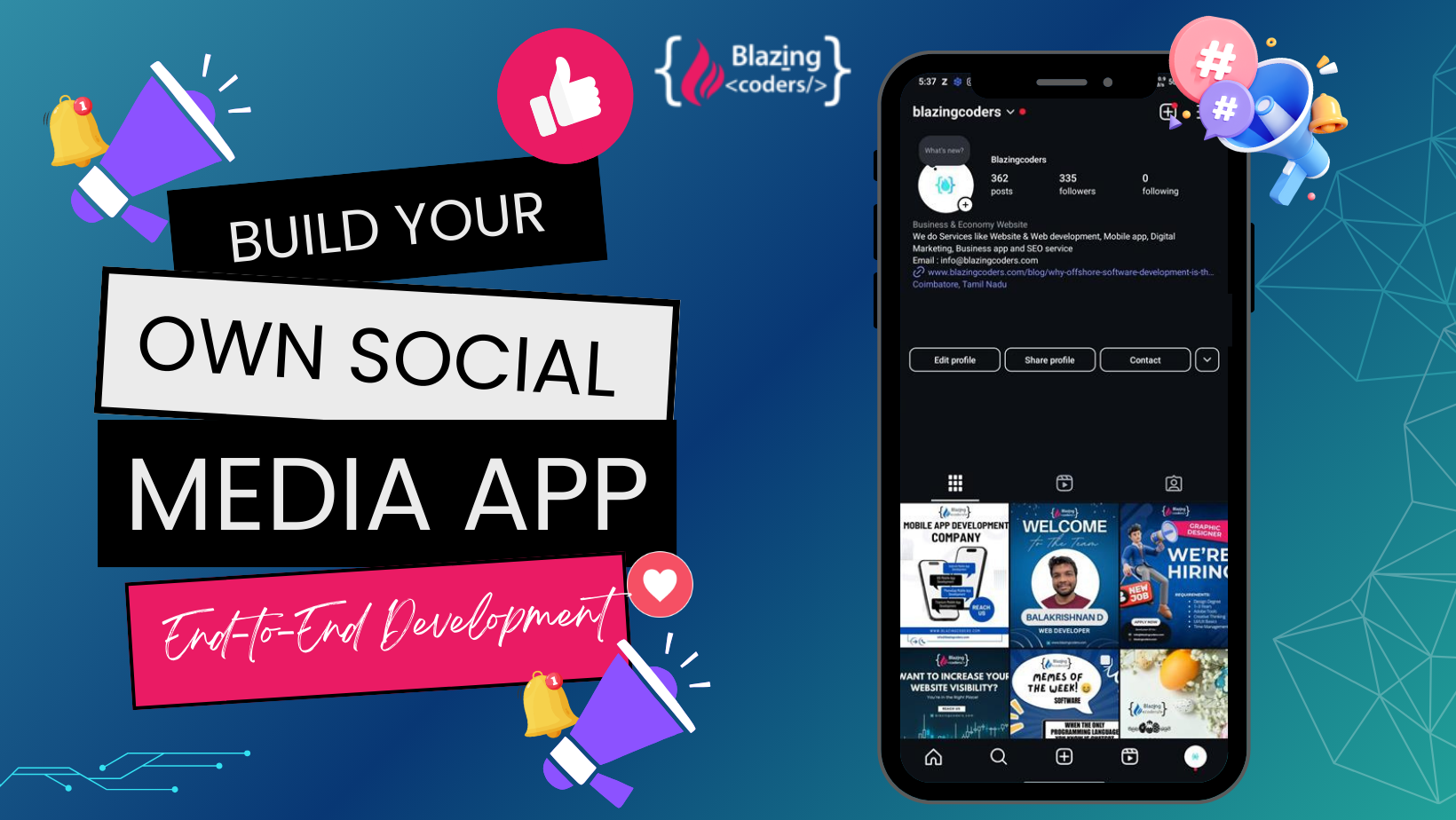Build Your Own Social Media App – End-to-End Development
Developing a social media app is not simply a fad; it's a lucrative economic opportunity in a time when billions of people browse, share, and interact online every day. Given that there will be more than 4.9 billion social media users worldwide by 2023 (Statista), there is a greater need than ever for niche platforms that cater to particular communities, hobbies, or genres. With the correct technology, approach, and user experience, starting your own social media app—whether it's a microblogging app like X (previously Twitter), a professional network like LinkedIn, or a visual-sharing platform like Instagram—can become a high-growth endeavour.
Why Now is the Right Time to Build a Social Media App
Social media app sales are still in their infancy. In actuality, consumers are actively looking for alternatives to popular platforms because they are worried about personalisation, privacy, and the relevance of the material. Innovation is possible, as seen by the growth of interest-based platforms, ad-free communities, and decentralised networks. Within weeks of their release, innovative apps like Threads, BeReal, and Clubhouse attracted millions of users, demonstrating that even upstarts can become viral with the correct hook.
Furthermore, the next generation of social media behaviour is being driven by Gen Z and younger Millennials. They place a high importance on community involvement, short-form video, real content, and user experiences that are customisable. Now is your chance to create a platform that accommodates these changing tastes.
Essential Features to Include in Your Social Media App
-
Your app needs to provide a seamless, interesting, and safe experience if you want to compete in this fast-paced market. User registration, profile creation, news feeds, text, photo, and video publishing, likes, comments, shares, search capabilities, chat and messaging, notifications, and privacy settings are among the essential features. However, you should also think about cutting-edge features like AI-driven content curation if you want to stand out.
-
Calling via voice and video
-
Filters for augmented reality (AR)
-
Real-time streaming
-
Tracking trends and hashtags
-
Features of gamification
-
Dark mode and personalisation of the user interface
These features improve user retention and offer unique value, especially in niche communities or content-based ecosystems.
The Development Process: From Idea to Launch
There are various technical and strategic steps involved in developing a successful social networking app. Market research is the first step of the process, which includes determining your target market, examining competing apps, and establishing the special selling point of your app. The next step is UI/UX design, which involves creating wireframes and user flows to illustrate the functionality and interface of the application.
Developers construct the front end (user interface) and back end (server, database, and APIs) after the design is complete. The following tech stacks are popular for creating scalable social media apps:
Frontend: Kotlin, Flutter, Swift, and React Native
Backend: Ruby on Rails, Django, and Node.js
Database: Firebase, PostgreSQL, and MongoDB
Storage & Cloud: Azure, Google Cloud, and AWS
Priority one should be given to security, scalability, and real-time performance, particularly for apps that allow for media sharing and live interactions.
Cost to Develop a Social Media App
Depending on features, complexity, and the location of the development team, the price of creating a social network app might vary significantly. The price of a fully complete platform with advanced features, admin panels, and analytics can reach $150,000 or more, while a basic MVP (minimum viable product) might cost anywhere from $20,000 to $50,000. Better project planning, tech support, and quicker go-to-market strategies are guaranteed when you work with an experienced development business.
Monetization Strategies to Make Your App Profitable
Monetizing a social media app can be highly rewarding if planned correctly. Popular revenue models include:
-
In-app advertising (banner ads, sponsored content)
-
Freemium model (free app with paid premium features)
-
Subscription plans (ad-free experience, exclusive content)
- E-commerce integration (marketplaces, influencer shops)
- Affiliate marketing and influencer partnerships
Using a specialised platform to connect into the social media marketing sector, which is predicted to reach $143 billion by 2030, can open up recurring revenue streams, according to Influencer Marketing Hub.
Trends Driving the Future of Social Media Apps
AI, customisation, decentralisation, and immersive experiences are key components of the future. These days, apps use blockchain for decentralised social networks, AI to create personalised feeds, and AR for filters and avatars. Offering end-to-end encryption and user-controlled data settings can help your app stand out in today's privacy-conscious market. Privacy is also increasingly becoming a key selling factor.
Furthermore, social media usage is predicted to rise even more as 5G rollout and smartphone penetration increase in nations like Brazil, India, and Southeast Asia, creating new markets for regional or vernacular-based platforms.
Conclusion
It's easier and more strategic than ever to create your own social networking application. A platform that not only connects people but also builds meaningful digital communities may be created with the correct vision, cutting-edge functionality, and a user-first design strategy. From micro-influencers to niche interest groups, there’s an audience waiting for the next big thing. Whether your goal is to build a social network, a creator hub, or a professional platform, the possibilities are endless.







